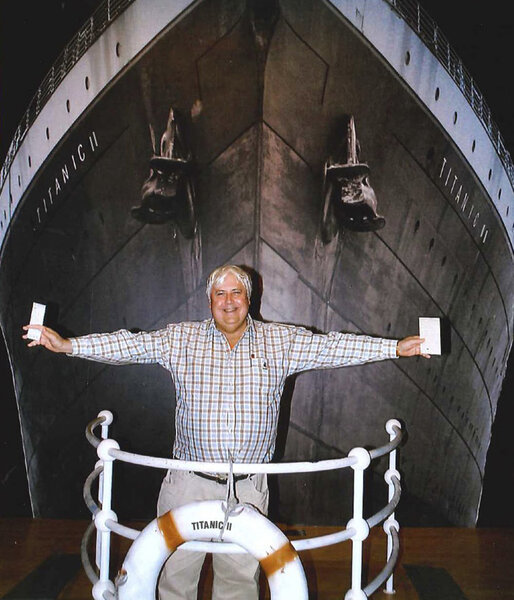Titanic II: Replica to make same voyage, but be made in China
Loading...
| Canberra, Australia
An Australian billionaire said today he'll build a high-tech replica of the Titanic at a Chinese shipyard and its maiden voyage in late 2016 will be from England to New York, just like its namesake planned.
Weeks after the 100th anniversary of the sinking of the original Titanic, Clive Palmer announced Monday that he has signed a memorandum of understanding with state-owned Chinese company CSC Jinling Shipyard to build the Titanic II.
"It will be every bit as luxurious as the original Titanic, but ... will have state-of-the-art 21st-century technology and the latest navigation and safety systems," Palmer said in a statement. He called the project "a tribute to the spirit of the men and women who worked on the original Titanic."
More than 1,500 people died after the Titanic hit an iceberg in the North Atlantic on its first voyage. It was the world's largest and most luxurious ocean liner at the time.
Palmer built a fortune on real estate on Australia's Gold Coast tourist strip before becoming a coal mining magnate. BRW magazine reported he was Australia's fifth-richest person last year, with more than 5 billion Australian dollars ($5.2 billion).
Palmer said at a news conference that previous attempts to build a Titanic replica failed because proponents failed to raise enough money and commission a shipyard. The Titanic II is the first of four luxury cruise ships Palmer has commissioned CSC Jinling Shipyard to build.
Palmer did not provide a cost estimate. He said he had established a new shipping company, Blue Star Line Pty. Ltd., and that design work for the Titanic II has begun with assistance from a historical research team.
The diesel-powered ship will have four smoke stacks like the coal-powered original, but they will be purely decorative.
The most obvious changes from the original Titanic would be below the water line, including welding rather than rivets, a bulbous bow for greater fuel efficiency and enlarged rudder and bow thrusters for increased maneuverability, Palmer said.
Brett Jardine, general manager for Australia and New Zealand in the industry group International Cruise Council, said Titanic II would be small by modern standards but could prove viable at the top end of the luxury market.
"From a marketing point of view, many will embrace it and perhaps there'll be some that wouldn't," Jardine said.
"If you've got a niche, it's going to work. Why go out there and try to compete with the mass market products that are out there now?" he added.
While the Titanic II would carry around 1,680 passengers, most modern cruise ships create economies of scale by catering for more than 2,000 passengers, he said.
Among the world's largest passenger ships, Allure of the Seas is 90 meters (295 feet) longer than the 270-meter (886-foot) Titanic and has 2,700 cabins.







